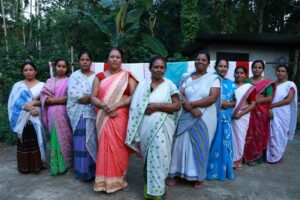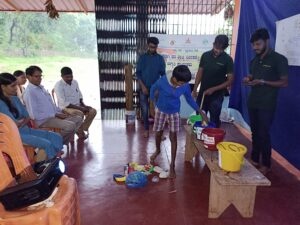Once a top bureaucrat and now a trailblazing farmer, Kahan Singh Pannu is rewriting the rules of paddy farming in Punjab — and doing it with a fraction of the water that traditional methods demand.
Raised in Punjab’s lush farmlands, agriculture runs deep in Kahan Singh’s veins. But the state he once knew — with overflowing paddy fields and rich aquifers — is now grappling with a crisis that lies just beneath the surface: a rapidly sinking water table.
Often dubbed the “breadbasket of India,” Punjab is staring at a water emergency. According to the Central Groundwater Board, the state’s aquifers could plunge below 1,000 feet by 2039 if current water extraction continues. And the main culprit? Paddy farming. The crop dominates 87% of the Kharif season farmland, with Punjab being India’s largest extractor of groundwater — 97% of which goes into irrigation.
From Policy to Practice: Leading by Example
Kahan Singh, a 1996-batch IAS officer and former Agriculture Secretary of Punjab, saw the crisis unfold firsthand — especially in his home village of Jai Nagar. “We’ve been over-exploiting water resources for decades,” he says. “And the irony is that paddy isn’t even native to Punjab.”
Instead of retiring quietly after a distinguished public service career, Kahan Singh stepped into the field — literally. Determined to find a solution, he drew on his academic background in agriculture and years of field experience to develop a revolutionary method of rice cultivation that could slash water use by a staggering 75%.
Enter SRB: Seeding of Rice on Beds
At the heart of this transformation is a technique he calls SRB — Seeding of Rice on Beds. The concept is simple yet powerful: grow paddy without flooding the field, using raised beds and targeted watering.
“Traditional paddy farming uses up to 4,000 litres of water to grow just one kilogram of rice,” Kahan Singh explains. “Fields are kept submerged throughout the season to suppress weeds. But that’s also what’s draining our groundwater.”
To tackle this, he partnered with local manufacturers to develop a custom SRB machine — a device that simultaneously prepares raised beds and sows seeds, drastically reducing labour and water consumption.
How It Works: Smart Farming in Action
Here’s the brilliance of SRB: After ploughing, the machine lays out two-foot-wide raised beds separated by one-foot furrows. Seeds are sown directly onto the beds, and water is supplied only in the furrows, reaching the roots without soaking the entire field.
This targeted irrigation means water is used only when and where it’s needed — and as a result, only 25% of the water typically used for paddy farming is required.
Solving the Weed Problem — Without Flooding
One of the biggest challenges with dry paddy farming is weed control — traditionally managed by drowning weeds under standing water. Kahan Singh tackled this with a smart solution: herbicide-tolerant seeds sourced from the Indian Agricultural Research Institute.
“These seeds allow selective herbicides to eliminate the weeds early, letting the paddy grow strong. Within 100 days, you have a healthy crop without ever flooding your field,” he explains.
Results That Speak for Themselves
The SRB technique was piloted across 12 trial sites in Punjab, and the results were impressive. On his own farm, Kahan Singh harvested 28 quintals of paddy per acre — completely on par with traditional flooded-field methods.
Farmers are taking notice. Jaswinder Singh, a farmer from Lambra village in Hoshiarpur, used SRB on two acres last season. “I saved ₹8,000 per acre in irrigation and labour. I only had to water the field four times, compared to at least 20 times earlier. And my yield? 24 quintals per acre, just like before,” he says.
A Future Built on Conservation and Innovation
Kahan Singh Pannu’s journey from IAS officer to hands-on farmer isn’t just a personal reinvention — it’s a powerful message for Punjab, and perhaps all of India. With water scarcity becoming one of the most urgent issues in agriculture, innovations like SRB could be game-changers.
“The solution isn’t to stop growing rice,” he says. “It’s to grow smarter — and sustainably.”
In a state where water is running out and the stakes are higher than ever, one man is proving that the answer doesn’t always lie in policy papers or government mandates. Sometimes, it starts with getting your hands dirty — and showing others a better way forward.
-inputs from The Better India





